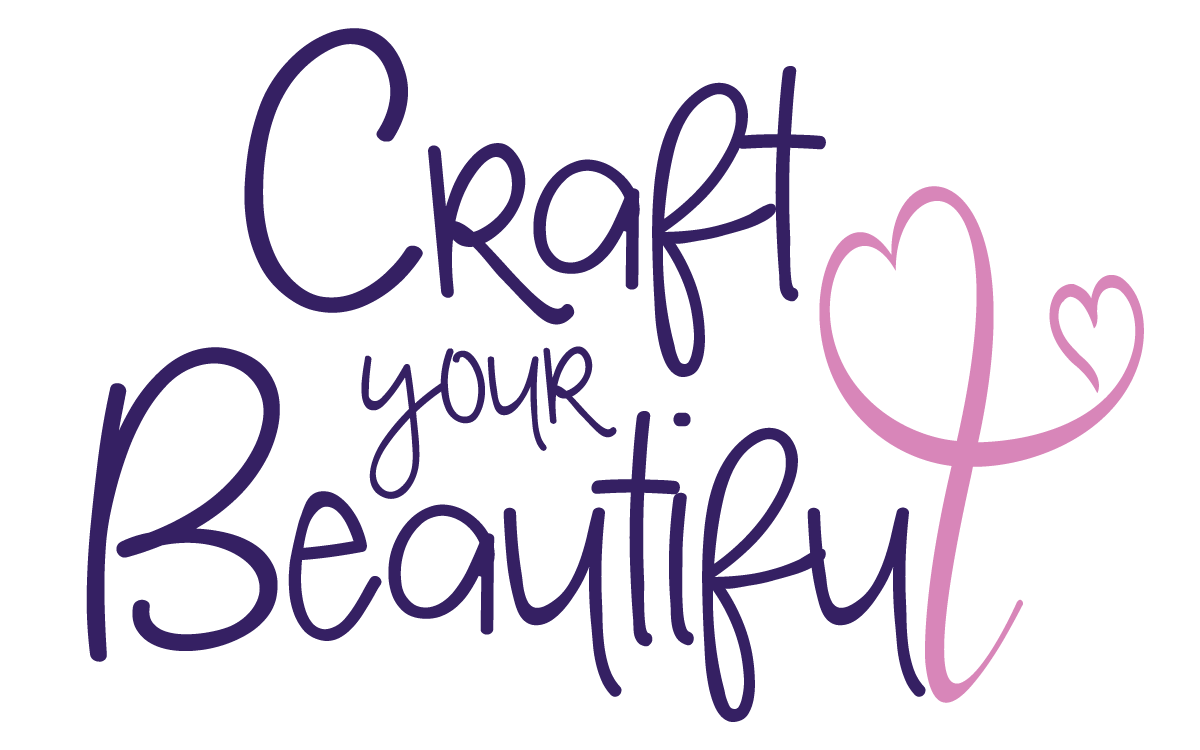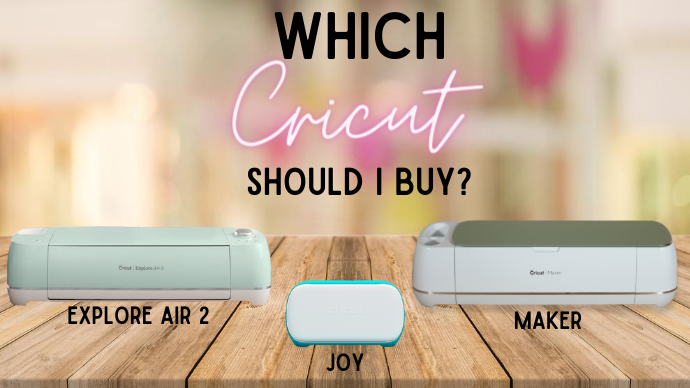This post may contain affiliate links which means I may earn a small commission if you click a link and decide to purchase a product. This is free of charge to you.
If you’re purchasing a Cricut for the first time, chances are you’re unsure which machine you should buy. Investing in a Cricut can be a big investment and I guarantee you want to make the right decision for your needs. While all Cricuts are capable of cutting a variety of materials, I’ll share the key areas you should consider before deciding on a Cricut Joy, Explore Air 2 or Maker.
What is a Cricut?
If you’re reading this post you probably already know what a Cricut is. In the unlikely event you don’t, in a nutshell a Cricut is a personal electronic die-cutting machine that can be used to transform plain materials into beautiful cut projects such as cards, monograms, signs, home décor and the list goes on.
Why Buy a Cricut?
If you are creative, love making hand-made crafts, see yourself needing to cut materials more than a few times a year and have a healthy dollop of patience, then a Cricut might be a good option.

I purchased my first Cricut when I was preparing for my wedding. I wanted to design and make my own décor, programs etc. and I felt a Cricut would help me through that process. It was the best decision I could have made at the time. I definitely got my money’s worth and ultimately saved thousands by making my own wedding stuff. So if you craft a lot and do a lot of material cutting, a Cricut is a sound investment.
Which Cricut Should I Buy?
The machine you decide on depends on the projects you want to make and your budget. All Cricut machines have basic capabilities. They can all cut a variety of materials, draw/write, connect wirelessly through Bluetooth and include free access to Cricut Design Space. But there are key differences you need to be aware of before you buy…keep reading.
Key Differences?
What are the key differences you ask? In a nutshell size, materials, cutting ability, cutting mats, technology and budget.
Size
The Cricut Joy is the newest and smallest of the Cricut machines. At approximately 8.4″ long x 5.5″ deep and 4 lbs it is truly compact and portable.
The Explore Air 2 and Maker are larger machines. The Explore Air 2 is 22.17″ long x 6.99″ wide and 21 lbs, while the Maker is 25.8″ long x 10.4″ wide and 15 lbs. Both are designed to be desktop machines i.e. sit on a tabletop.
If space or portability is a concern, or you’re only ever planning on making small projects, the Joy is a good option, otherwise Explore Air 2 or Maker might be a better choice.

Materials
All Cricut machines can handle a variety of materials but some more than others.
The Joy for example can cut about 50 materials including cardstock, vinyl and iron on transfers. The Explore Air 2 cuts 100+ materials while the Maker can handle 300+ materials including delicate fabrics like chiffon and chantilly lace.
When choosing a Cricut, choose the one that can cut the materials you plan to use in your projects.
For the entire list of materials each Cricut can handle, check out Cricut’s What Materials I Can Cut With Cricut Joy and What Materials I Can Cut With Cricut Explore and Maker pages.
Cutting Ability
The type of blade your machine supports will determine the materials it can cut. Different blades are for different purposes. For example, a fine point blade won’t be able to cut cardboard – that needs a knife blade. Similarly, a deep-point blade would ruin delicate fabrics, it requires a rotary blade instead.
The Cricut Joy has a single all-purpose blade and therefore it’s no surprise it only handles around 50 types of materials.
The Explore Air 2 supports multiple fine point blades including the premium fine-point, deep-point and bonded fabric blades. It also supports a scoring stylus that is useful when making folded projects like greeting cards and 3D boxes.
The Maker supports the most blades and hence cuts the most types of materials. In addition to the fine point blades and scoring stylus that can be used on the Explore Air 2, the Maker also supports a rotary blade (for cutting fabrics), knife blade (for thicker materials like chipboard and balsa wood) and all the QuickSwap tools namely Scoring Wheel, Debossing Tip, Engraving Tip, Perforation Blade and Wavy Blade.
If your focus will be creating small, simple cards and labels or iron-ons, the Joy might be your best option. However, if you plan on making complicated projects and want more versatility when it comes to materials the Explore Air 2 or Maker are worth looking into.
Cutting Mats
The Joy can cut Smart Materials without a mat but other materials require a mat. Smart Materials are rolls of materials that are fed directly into the machine without the need to adhere them to a mat. Examples are vinyl rolls.
Mats for Joy are available in 4.5″ x 6.5″ and 4.5″ x 12″ sizes. In addition to the StandardGrip and LightGrip mats, Joy can also be used with a Card Mat. The Card Mat allows you to cut out your design on the front of a folded card, without cutting the back. Really cool for cardmaking.
Both the Explore Air 2 and Maker require a cutting mat. The largest cutting mat available at the time of writing is a 12 x 24″ mat but the machine ships with a 12″ x 12″ mat. I’ve found the 12″ x 12″ mat adequate for most of my projects.
Mats are available for both machines in different strengths of “stickiness” or grip and colour coded for easy identification – StandardGrip (Green) for regular paper, cardstock and vinyl, LightGrip (Blue) – for delicate papers like tissue paper, vellum and light cardstock; StrongGrip (Purple) for heavyweight specialty cardstock, glitter cardstock and FabricGrip (Pink) for fabrics.
Technology
When it comes to technology, the Maker is the only machine with the Adaptive Tool System.
Explore Air 2 and Joy use Smart Cut technology, meaning the mat moves forward and back and the blade moves from side-to-side. The blade is either up or down. Down when cutting and up when moving to a different position on the mat before it goes down to cut again.

The Adaptive Tool System does what Smart Cut Technology does and much more. It provides more control to achieve intricate cuts and cuts through thicker materials. Here are a few of the features the adaptive tool system is capable of:
- It uses a steering system to cut from side-to side, move up and down and rotate the blade
- Delivers up to 10x more pressure than the Explore machines and therefore can cut thicker materials
- It checks whether you have the correct blade loaded and prompts you if you don’t. Nice feature to prevent you from ruining your project.
- It supports additional blades like the rotary blade, knife blade and debossing and engraving which significantly increase the versatility of the machine.
- Supports Quick Swap Housing. Without Quick Swap Housing if you want to change blades you have to unscrew or unhook the tool housing and replace with a different tool housing that includes the new blade/tool. With Quick Swap, changing tools is much easier because the housing remains in place and you simply change the tool tip with the press of a button.
Budget
Despite all the features each Cricut brings, you will want to consider your budget. At the time of writing, the most affordable of the Cricut offering is the Joy at $229.99 CDN/$179.99 US. This is followed by the Cricut Explore Air 2 at $289.99 CDN / $249.99 US and then the Maker at $489.99 CDN / $399.99 US.
As you can see, some of these machines are pricey. You will need to determine the one that meets both your needs and budget. If you are a serious crafter you might be able to justify the spend on a Maker, if you only plan on making small cards per year the Joy or Explore Air 2 might be a better choice.
Still undecided? Download my free cheat sheet to help you decide.



Share your thoughts